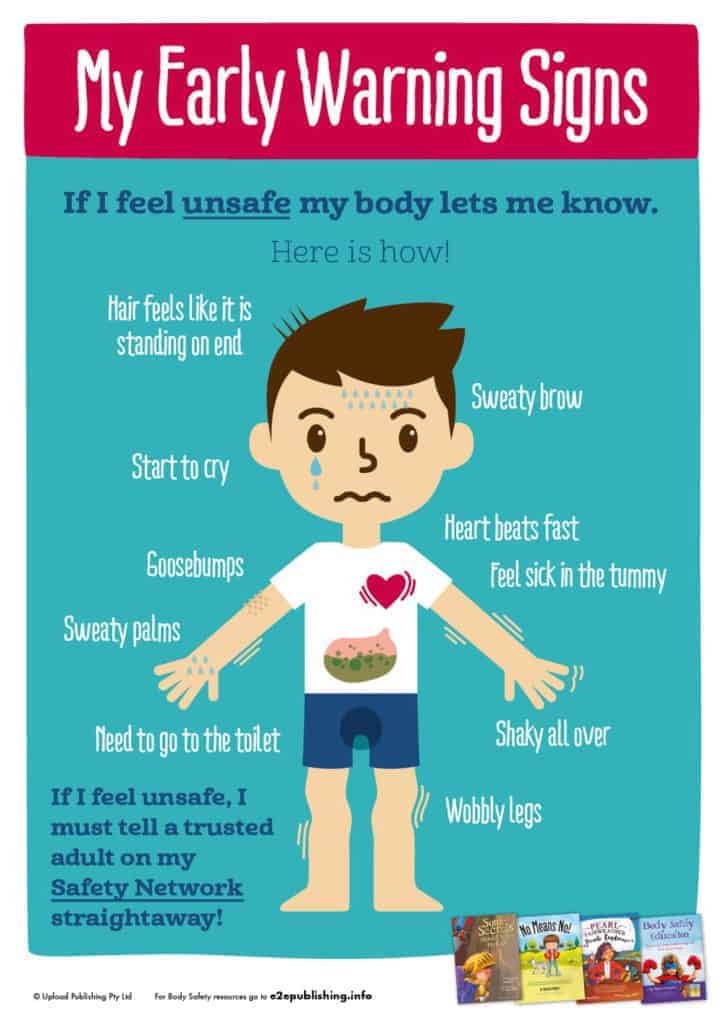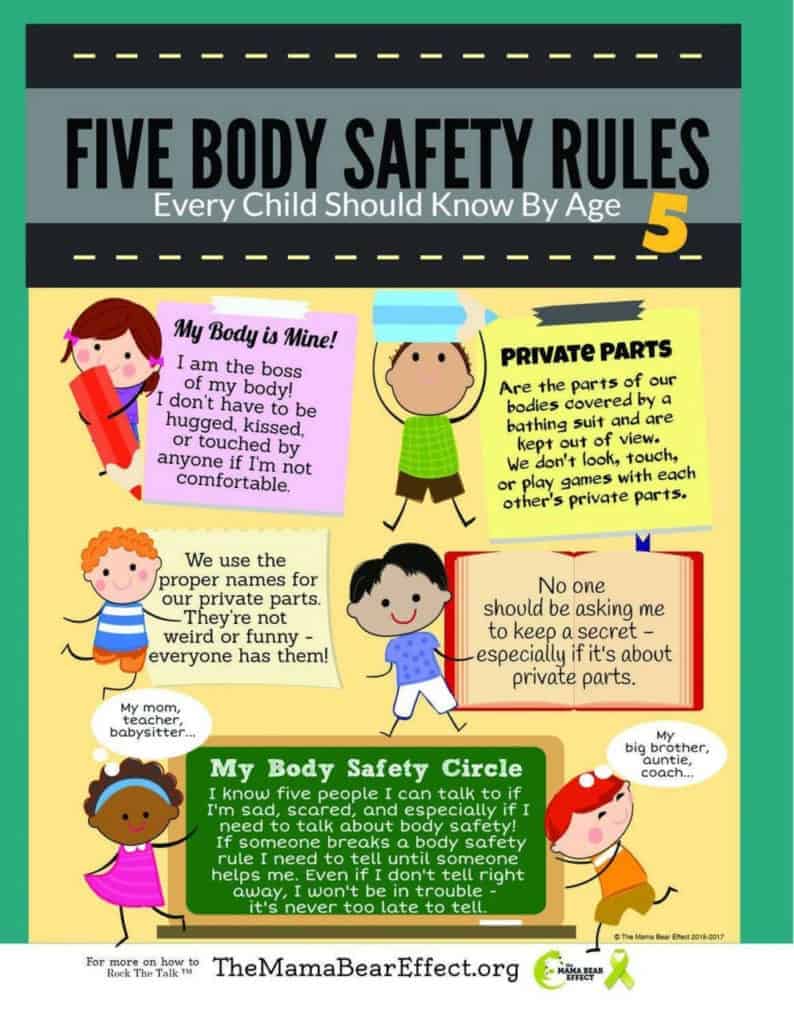Body safety comes down to consent, but how do you teach consent to a child at the age of 5?
Parents and meaningful adults find it challenging to discuss body safety with their children because it necessitates a “sex” discussion. Many parents wait until adolescence to avoid the subject. But there are ways to teach and reinforce body safety beginning at the age of 3-5 years old!
Just as you teach your child to buckle their seat belt and brush their teeth, it’s important to have them understand the private parts of their body and that it’s not okay for others to touch these parts. The tips below will get you started on the path to teaching body safety.
1. Frame body safety in terms of “safe vs. unsafe touching” rather than “good vs. bad” touching, which could evoke a feeling of guilt within the child. Don’t forget to include a discussion about healthy and unhealthy secrets. For example, it’s okay to keep a secret about a birthday present but it’s not healthy to keep a secret about unsafe touching from a parent or guardian.
2. Teach the child what feeling “unsafe” might look and feel like if experienced, such as feeling sweaty, upset stomach, heart beating fast, goosebumps, etc.

3. It’s important for a child to understand the proper names for their body parts, especially private parts, and feel comfortable saying those words aloud. If a child then experiences an unsafe touch they are able to identify and explain the situation to a trusted adult without confusion. (https://www.kidsfirstinc.org/how-to-talk-to-young-children-about-body-safety/)

4. Additionally, it’s good practice to have your child list at least 5 trusted adults they could talk to if they were experiencing unsafe touching. Practice reciting their names, their relationships, and how to contact them. Such as “Mrs. Holsapple. She’s my teacher and I can talk to her at school.”

5. Don’t forget to talk to your child about indecent exposure and, depending on their age, exposure to pornography as well. If you choose to use the bathing suit example, where you explain “No one should ever touch you in an area where your bathing suit covers” then you would also want to include “No one should ever show you an area of their body a bathing suit covers or ask you to touch them in a bathing suit area”.
6. Unsafe touching does not exclusively occur with children and adults, so be sure to talk to your child about these boundaries with other children as well. Stress that no one, adult or otherwise, should be making your child feel uncomfortable. (https://carecenter-okc.org/teachingkidsbodysafety/)
7. It’s a myth that teaching your children about “stranger danger” is enough to keep them safe from sexual predators. In a large majority of sexual abuse cases, the abuser was a known figure in the victim’s life as a familiar adult. Abusers will go to great lengths to put forth a trustworthy persona in order to have access to children.
8. If your child doesn’t want to hug or kiss a relative, don’t force them. Children need to understand they can say no to any kind of touch even if we consider it “harmless”. If children are not given the space to respect body boundaries, it can condition them to accept other unwanted and potentially unsafe touches. Encourage a high five instead!
9. Practice with your child! Playing the “what if” game with your children can give them valuable practice for the chance they are ever in a dangerous situation. Asking your child “What if a friend at school thinks it’s funny to pull down his pants?”, say “No, Stop! Private parts are private”. (https://e2epublishing.info/blog/body-safety-and-consent-resources )
10. Model positive body safety boundaries for your child! The next time your child reaches to give you a hug, be clear and consistent with your messaging. For example, “Thank you for that great hug. I like hugging you because hugs are safe touches in our family”.
11. Don’t just have the conversation once. Continue to reinforce body safety practices with your child and ask questions often! Just like your child will need reminders to do their chores and brush their teeth, they will need reminders about body safety.
If you’re interested in other resources to help start the conversation with your child about body safety, check out the list below:
5 Books About Body Safety and Consent
1.NO Trespassing – This Is MY Body! by Pattie Fitzgerald
2. Do You Have a Secret? (Let’s Talk About It!) by Jennifer Moore-Mallinos
3. I Said No! Kid-to-kid Guide to Keeping Private Parts Private by Zack & Kimberly King
4. My Body! What I Say Goes! by Jayneen Sanders
5. Some Secrets Should Never Be Kept by Jayneen Sanders

